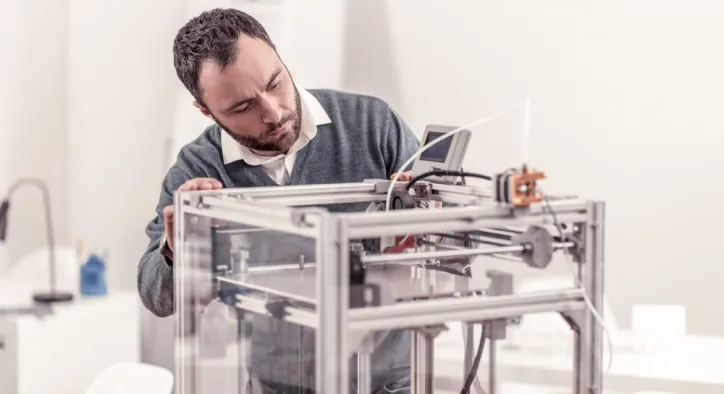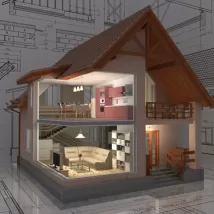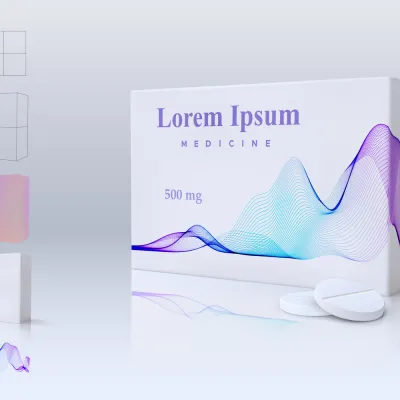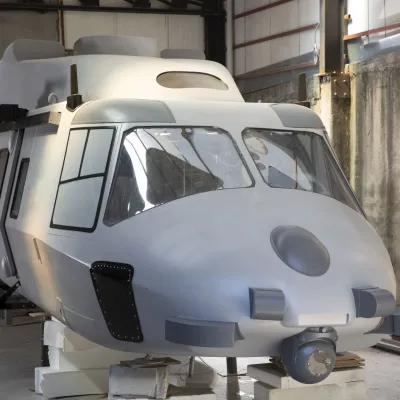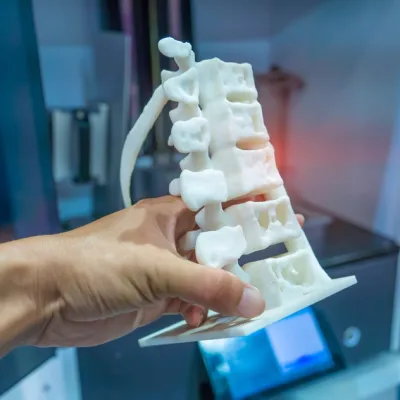- Konu Başlıkları
- Architectural 3D Printing and Sustainability: The Technology That Shapes the Future
- What Does Architectural 3D Printing Technology Offer for Sustainability?
- 3D Architectural Printing and Sustainability
- Sectors Transformed by Architectural 3D Printing Technology
- Bridge Construction and Architectural 3D Printing Technology
- Sustainable 3D Printing in Urban Furniture Production
- 3D Architectural Printing in Infrastructure Projects
- Industrial Design and Sustainable 3D Printing
- Looking to the Future: Architectural 3D Printing and Sustainability
Architectural 3D Printing and Sustainability: The Technology That Shapes the Future
In the world of architecture, technology and environmental awareness have become the two most important priorities of our time. At this point, architectural 3D printing and sustainability emerge as a revolutionary combination that changes the face of modern architecture. This technology not only simplifies design processes, but also opens the doors to a sustainable future by reducing environmental impacts.
[widget-131]
What Does Architectural 3D Printing Technology Offer for Sustainability?
Architectural 3D printing technology has great potential in line with sustainability goals. Traditional building construction processes often cause excessive material waste, high energy consumption, and a serious carbon footprint. In contrast, structures produced with 3D printing ensure that materials are used to the fullest extent and efficiently. In this way, waste is reduced to almost zero and energy consumption is significantly reduced.
In addition, sustainable 3D printing technology also allows the use of local and recyclable materials. For example, bio-based or recycled materials can be used instead of concrete. Thus, architectural 3D printing and sustainability not only reduce environmental impacts, but also make building construction processes economically sustainable.
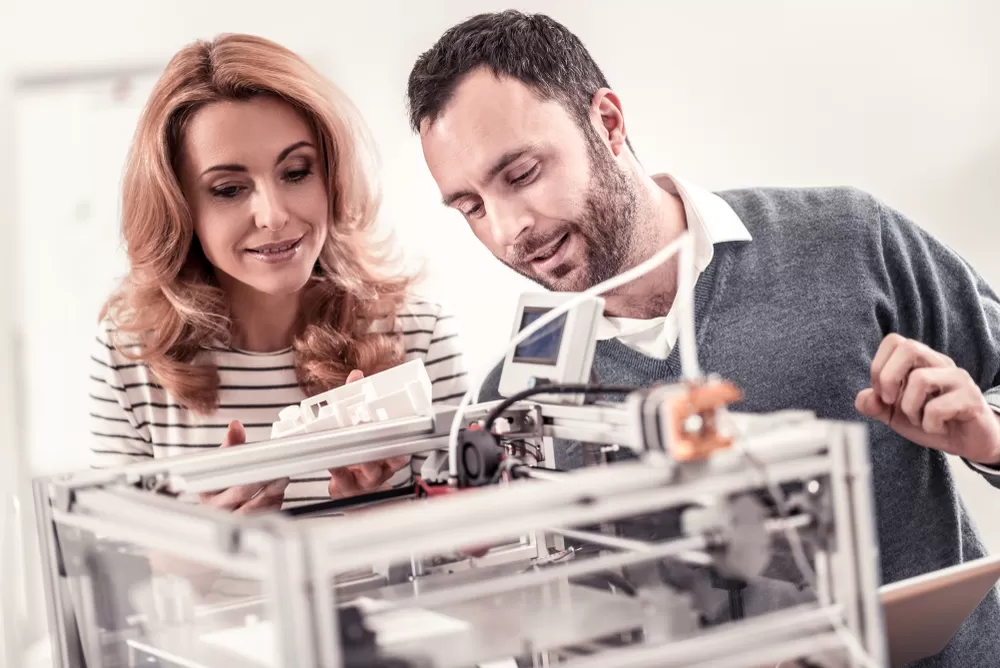
3D Architectural Printing and Sustainability
Structures constructed with traditional methods often offer limited options in terms of aesthetics and functionality. However, 3D architectural printing goes one step further in terms of sustainability and makes it possible to create both environmentally friendly and innovative designs. For example, structures that are difficult to create with traditional methods, such as organic and fluid forms, can be easily realized with 3D printing. The sustainable materials and techniques used in this process form the basis for building environmentally friendly cities of the future.
This technology offers a great advantage, especially for urgent shelter needs. Sustainable houses can be built quickly in disaster areas and these houses can be produced without harming the environment by utilizing local resources.
Sectors Transformed by Architectural 3D Printing Technology
The impact of architectural 3D printing technology on sustainability is not limited to the construction sector alone. This technology can be used in many different areas such as urbanization, infrastructure projects and industrial design. For example, sustainable 3D printing technology offers high strength and low-cost solutions in bridge construction or urban furniture production.
In addition, thanks to the customization opportunities offered by architectural 3D printing and sustainability projects, each project can be optimized considering environmental factors. This not only provides an environmentally friendly design process, but also increases the user experience.
Bridge Construction and Architectural 3D Printing Technology
Bridge construction is a very complex and costly process with traditional methods. However, architectural 3D printing technology has revolutionized bridge projects in terms of sustainability. This technology not only produces aesthetically pleasing bridges thanks to its design flexibility, but also minimizes environmental impacts.
In bridges produced with 3D printing, it is possible to reduce waste by optimizing the use of materials such as concrete. In addition, environmentally friendly bridges can be built using recyclable materials. For example, the first bridge produced with 3D printing in the Netherlands has demonstrated the future potential of sustainable structures.
Thanks to its fast construction time and low cost, this method offers an effective solution not only in urban projects but also in rural areas. These bridges, which support 3D architectural printing sustainability goals, will become an indispensable tool in future infrastructure projects.
Sustainable 3D Printing in Urban Furniture Production
Urban furniture is one of the important elements that reflect the identity of a city. While traditional production methods usually cause high energy consumption and environmental impacts, sustainable 3D printing technology makes this process much more efficient.
Many urban furniture, from park benches to lighting poles, can be produced using environmentally friendly materials with 3D printing technology. In addition, it fully meets the aesthetic and functional needs of cities by offering the opportunity for personalization in the design process. For example, benches specially designed for a park area can be easily produced with 3D printing and the carbon footprint can be significantly reduced in this process.
Architectural 3D printing and sustainability not only offer an environmentally friendly approach in urban furniture production, but also protect city budgets by reducing costs. This is an ideal solution for those who want to take an innovative step in urban planning.

3D Architectural Printing in Infrastructure Projects
Architectural 3D printing and sustainability infrastructure projects are vital elements that ensure the functioning of cities. However, these projects often come with a large environmental cost. 3D architectural printing offers environmentally friendly solutions in infrastructure projects in line with sustainability principles.
For example, building materials used in projects such as water channels, power plants and tunnels can be produced much more efficiently with 3D printing. Moreover, this technology reduces logistics costs by allowing the use of local materials. Architectural 3D printing technology, combined with the understanding of sustainability, significantly reduces the carbon footprint of these projects.
This technology is also an ideal option for increasing durability and reducing maintenance costs. Infrastructure solutions that can be built quickly, especially in disaster areas, concretely demonstrate the long-term effects of 3D printing.
Industrial Design and Sustainable 3D Printing
Industrial design shapes production processes by combining functionality and aesthetics. However, traditional methods can lead to high energy and material consumption in the production of these designs. Sustainable 3D printing technology has revolutionized industrial design.
This technology minimizes material waste at every stage from prototype production to final product. The use of recyclable and environmentally friendly materials reduces the environmental impact of products. In addition, thanks to rapid prototyping, designs can be realized in a shorter time and resources are used more efficiently in this process. Industrial designers working with architectural 3D printing and sustainability principles can not only produce environmentally friendly products, but also better meet consumer expectations. This creates a win-win situation for both manufacturers and consumers.
Architectural 3D printing technology is groundbreaking in terms of sustainability not only in the construction sector, but also in many different areas such as bridge construction, urban furniture, infrastructure projects and industrial design. Thanks to environmentally friendly materials and innovative designs, this technology has become a powerful tool for building the world of the future. With the advantages it offers in every sector, 3D architectural printing plays a critical role in achieving sustainability goals.
[widget-136]
Looking to the Future: Architectural 3D Printing and Sustainability
Architectural 3D printing and sustainability stand out as an innovation that increases environmental awareness and provides economic benefits for both individuals and societies. This technology will shape not only today's world but also tomorrow's world with its limitless design possibilities and potential to build environmentally friendly structures.
As a result, architectural 3D printing technology is revolutionary in terms of sustainability. With both material savings and environmentally friendly production processes, this technology serves as a key to building sustainable cities of the future. With the rapid development of technology, the dream of a greener world has become a much closer reality.

